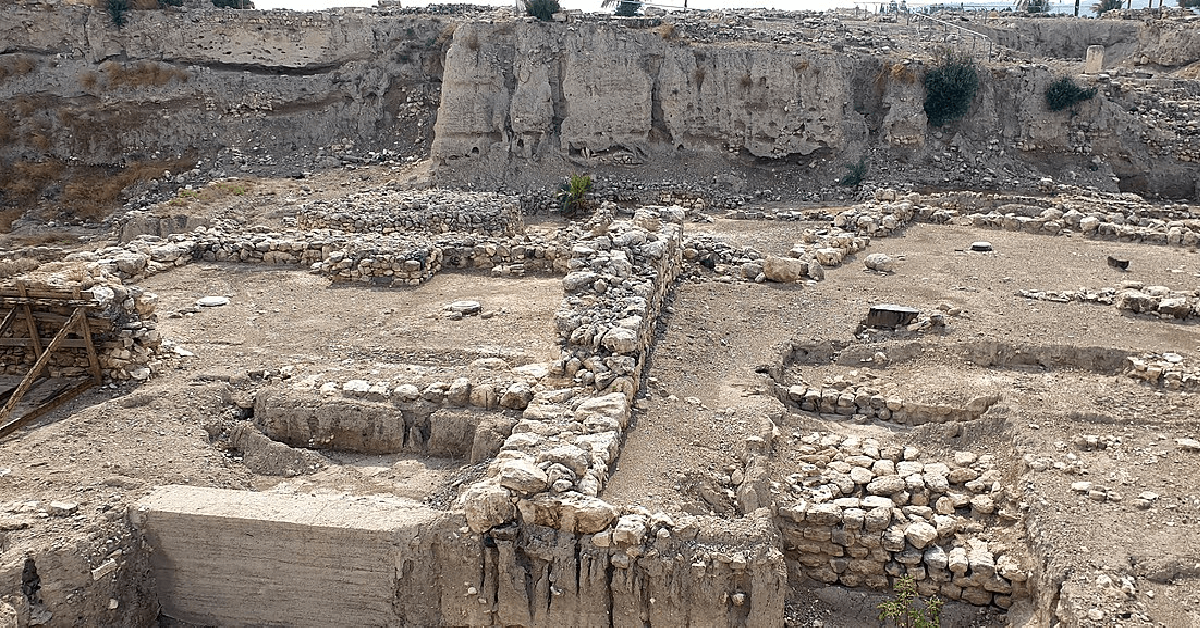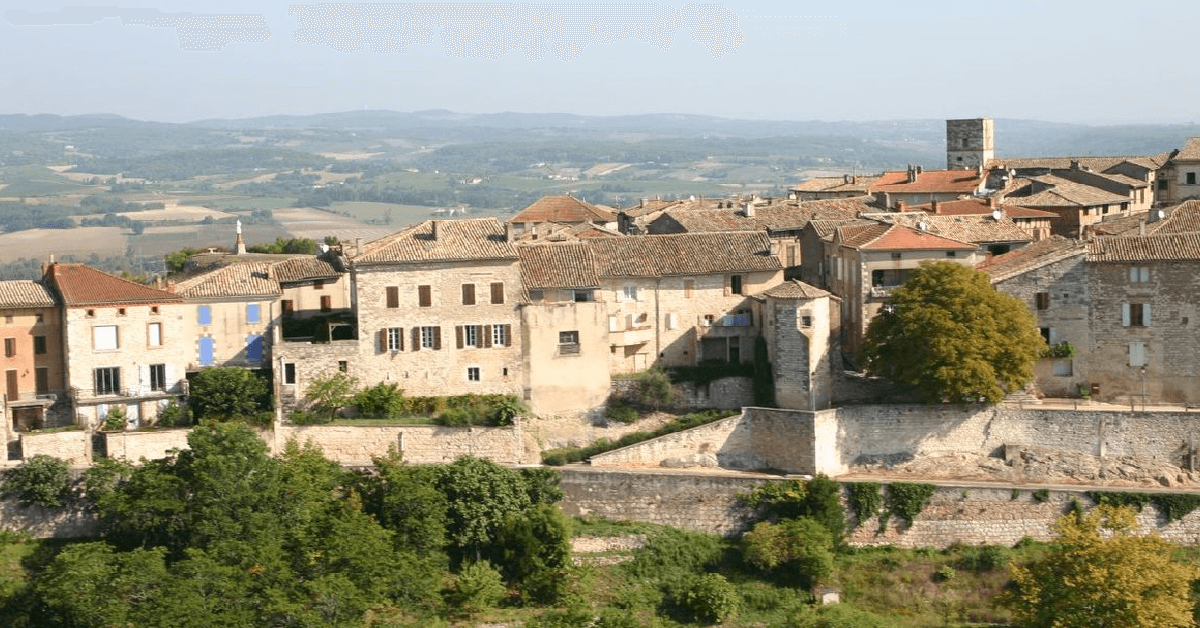Archaeologists Find Ancient Church That’s Covered In Intricate Mosaics
The ancient Byzantine church was found around 30 miles south of Tel Aviv.
Archaeologists in Israel have made one of the most amazing discoveries that we have ever seen and this is not a hyperbolic statement in any way. They have managed to uncover some of the intricate mosaics that we have ever come across.
Most surprisingly of all, they were found on the floor of a 1,500-year-old Byzantine church. One of the mosaics even happens to bear a Christogram (also known as the symbol of Jesus Christ).

The Israel Antiquities Authority (IAA) made its announcement about the discovery on Wednesday, January 22. The ruins were initially discovered by the archaeologists during their salvage excavation ahead of an Aluma construction project.
This village is located roughly 30 miles (50 kilometers) south of Tel Aviv. Excavator Davida Eisenberg Degen shared more details about the excavation and it sounds like a blast.

According to LiveScience, the team was given the chance to use an industrial digger to probe a mound that was located at the site. They created a 10-foot hole and through this hole, they had the chance to catch a glimpse of the white tiles from the ancient mosaic. The excavations took place over the course of a month, revealing the church to the team.
This basilica is believed to have been part of a local Byzantine settlement. However, these archaeologists are also of the belief that this location also served as a Christian worship center for neighboring communities in the region, owing to its very convenient location. You can see a photo of the stunning mosaic as shared by the Jewish Journal below:
https://www.facebook.com/JewishJournal/photos/bc.AbrOE4DxxkIM3my4yZQZTzOQs6Phk62HCZOroWA01Vbf48i7nK9mlJF7vi8zj09xgPz5ElKTB9pGqzuZFvNF0mpFJOUtcEjsz0yyGmuZTocSw2-PlmSKhiBy-paeSWRmGkD11GrW4XygQgrHYrcTsiMUjaKO98jalrw7584VHJ5pySon4dB_6Q5BiDBtcQn5vwkdKNJoEhWUun0GVufFNDQA/10152000743159713/?opaqueCursor=AbpvJHcAdnLimkTu3pk22f5ZZxZeyBy04wNa6ak_tEPYxLqD_hLLfOewU3o079dYRNw5ky70MqKjhXiBaKE2JPTHgImMKWv1CToF6WqtYNOSXmwHJMQu-pzZ-Y3QSE40O2hFR06FAouNPbhv5M6ynHvG1Su-4GrOpRT2tGoKfzsYCHgGuf7F02sVNSIsjFN89Rbp5isKC5Q1JzDLXQnrAnlMKSAdV7O5iYlbzLPo8oCL9L4xheyW9iM0rJxsaO-wa8rxvHJ3Xyba_2l1el-tDOlxzKjqs-CYYJcTgCIQPEzcM1jpv4c2fQzTuyEs17IyBwHWdII1HJ0Uhg2J8ZRt5J_0lvlgIaGZmHqFsaXAdbPlF9uZplmATabNEzAV8C_DjVQ4ngphJFpoLNVTDClG05rwpgHCsJfYQTxEqQS61KOu3HXE5pCUTm7rkiGJk2TgiqMHH1HZlCKiYFXINDflTyl8ZVWS6sZNNfLOi-hakmxOKya6XT1YqDmutOW3Rnvm2OZzybd8eV-vJFl5SzMeJDl2CkEHSAwyyte4yAHP87D_j6KnIUn7FagP4UeqP2fY53Z6QsJnrL8jxshAGu10PuRQ
It was situated right next to the main road that ran between the ancient seaport city known as Ashkelon in the west. Beit Guvrin and Jerusalem residents located east could also access this worship center with ease.
“Usually a Byzantine village had a church, but the size of this church and its placement on the road makes it more important,” Degen explains, according to LiveScience. Degen also explained the presence of the Christogram, which is not exactly as it seems. You see, they would not have placed this symbol on their floor willingly, as no one would want to step on it.
https://www.facebook.com/JewishJournal/photos/bc.Abo1ZG7Crcec5NmFAB2v3Nla6-QoR7YC_JzJ0Lf7ZSgEFOH97PI3aIDEKi_PJ4lRKCC-T5sXIIGuQcSGtvaR4WofXX9ElYde_f0o_MoK74zb0frzDZXUbIha-sN1hTyRUuiE951gweAWy4x3XjtlQGfG-LMrvEAWpPOrQQXt6a4itNATywqQXuzDRSl_Vag44vd2gs8rscnPtcX2uyBkJpVS/10152000743454713/?opaqueCursor=Abp7OKcw5jPyTXiETYk5qxtD1myqg0vQm2_PopFrHb7pSmgI945PgkmupB-t_j1M1QThVYPHIa9lEtxu-sZIdoIzTNcqMcbJ1AEOpF4s_q5Q29YYG_dMTfG7BnYDh_XZ_g_S7xvKGGt3hCKPlrQ1vOtPUlPBviyxJDDnzi-LORDKHhY-RHioWLr3nm3k8q_7fhvIJ4NeZWX7DsYYneoa4_dYFgkELSR9003wnmRhV5xjce-D3KmkAKT5ppj8N1JsgWJq9sFmrOmLM8Hlv8ZzK7cZ9kd-tM6sGfreWP50pe5mfw_Qzc-VnDUBMxKAWmylsB9VXpgWPPL080EY6esNNKlZkHHPamQPO3i0qjJfmjsC26u64yU2x92qFDtk7O68r6wMePPS0_jm40LP3_nZy6ZwQCnV55Lm6si-mbzHLcWjA_dUG_1a4L5Nv_p634uIgscZ2mi9TXY4w_U9un5uMhQFJW_JR8D2Fh3yQAIboyJOfR7aRZ-Mo-AZYT20rY7IqHEM-ijYZE1a0CGg_BXxvpN9jwj0G2L9Se8WjmPz7LDIW3sHbCFI4eFWY8Y8EadGToVbaHS0u5aJ9J_2AweSqgyx
It is actually a “chi-rho” symbol. This symbol is made by putting together the first two capital letters in the Greek word for Christ. To most of us, this symbol will typically look like an X has been superimposed on a P. The first and last letters of the Greek alphabet (also known as the alpha and omega) are placed on either side of the chi-rho as well. This serves as another Christian symbol. We definitely learned something new today!
SKM: below-content placeholderWhizzco for FHB

